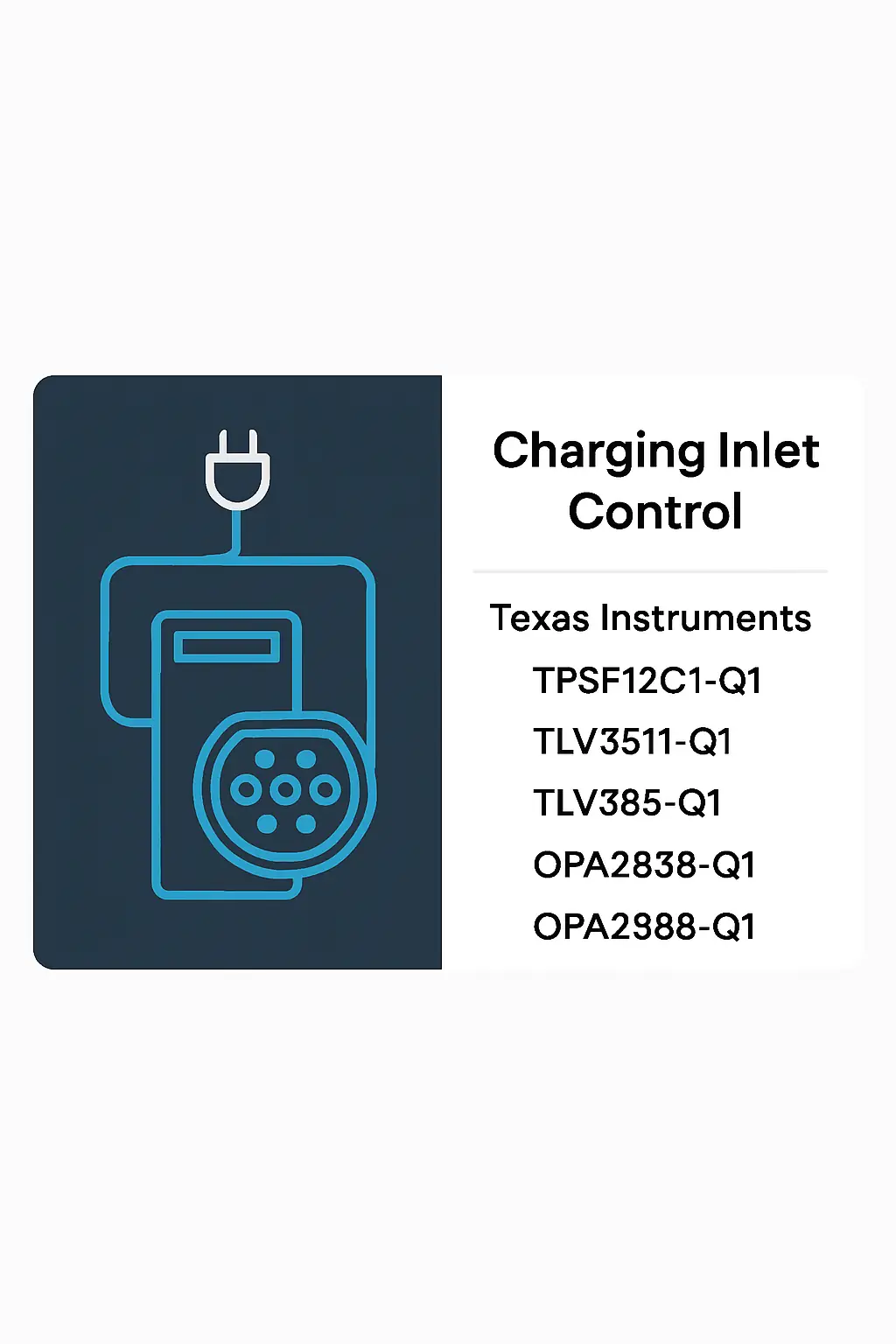Charging Inlet Control
The Charging Inlet Control is a critical component within the On-Board Charger (OBC) system of Electrification & Battery Systems in Automotive Electronics. It serves as the interface between the vehicle and the external charging source, ensuring safe and efficient energy transfer during the charging process. This control unit manages the connection, communication, and power flow between the charging station and the vehicle’s battery system.
Designed for electric vehicles (EVs) and hybrid electric vehicles (HEVs), the Charging Inlet Control plays a key role in monitoring and regulating the charging process. It ensures compatibility with different charging standards, such as AC and DC charging, and supports communication protocols like ISO 15118 and OCPP. By controlling the electrical connection, it enhances safety by preventing overcharging, overheating, and electrical faults.
This technology is widely used in modern EVs, where seamless and secure charging is essential for user convenience and system reliability. It is also crucial in fleet management systems, public charging stations, and smart grid integration. The Charging Inlet Control contributes to the overall efficiency of the vehicle's energy management system, supporting faster charging times and improved battery longevity.
In summary, the Charging Inlet Control is an essential part of the electrification ecosystem, enabling safe, efficient, and intelligent charging solutions for the next generation of automotive systems.
Details
Charging Inlet Control

Related Parts
| Series Name | Description | Manufacturer Name | Attribute Description |
|---|---|---|---|
| Texas Instruments | 12V, 1A, automotive-grade DC-DC buck converter with integrated MOSFET, 2.1MHz switching frequency, synchronous rectification, over-current and thermal protection, small 2mm × 2mm QFN package. | ||
| Texas Instruments | Single-channel comparator with push-pull output, 1.8V to 5.5V supply, 4.3ns propagation delay, low power, automotive grade, operates from -40°C to +125°C. | ||
| Texas Instruments | Dual operational amplifier, 2.7V to 5.5V supply, rail-to-rail I/O, 1.2MHz bandwidth, 2.3V/µs slew rate, -40°C to 125°C temperature range, low power, automotive grade. | ||
| Texas Instruments | Dual-channel, low-noise, wideband operational amplifier with 160 MHz bandwidth, 80 V/μs slew rate, low 3.6 nV/√Hz input voltage noise, operating on 2.7V to 5.5V supply. | ||
| Texas Instruments | Dual-channel, precision operational amplifier with 10 MHz bandwidth, 5 V/μs slew rate, low noise (5.2 nV/√Hz), low offset voltage (5 μV), and rail-to-rail output, designed for automotive applications. | ||
| Texas Instruments | Dual operational amplifier, low-noise, rail-to-rail output, 2.7V to 12V supply, 2.4MHz bandwidth, 3.8V/μs slew rate, -40°C to 125°C operating temperature, automotive grade. | ||
| Texas Instruments | Dual-channel, high-precision operational amplifier with 10 MHz bandwidth, low offset voltage (±25 µV), low noise (3.5 nV/√Hz), rail-to-rail output, and supply range from 4.5 V to 36 V. | ||
| Texas Instruments | H-Bridge motor driver, 6.5V to 45V supply, 3.6A peak output current, integrated FETs, PWM control, low-power sleep mode, fault protection (OCP, TSD, UVLO), operates from -40°C to 125°C. | ||
| Texas Instruments | Quad bilateral switch, 2V to 6V supply, low on-state resistance, 5Ω typical, high off-isolation, 50pF max capacitance, 125°C operating temperature, suitable for analog/digital signal switching. | ||
| Texas Instruments | 12-bit, 1 MSPS, 16-channel, analog-to-digital converter with SPI interface, operating temperature: -40°C to +125°C, low power consumption, automotive grade. |








.png?x-oss-process=image/format,webp/resize,h_32)










